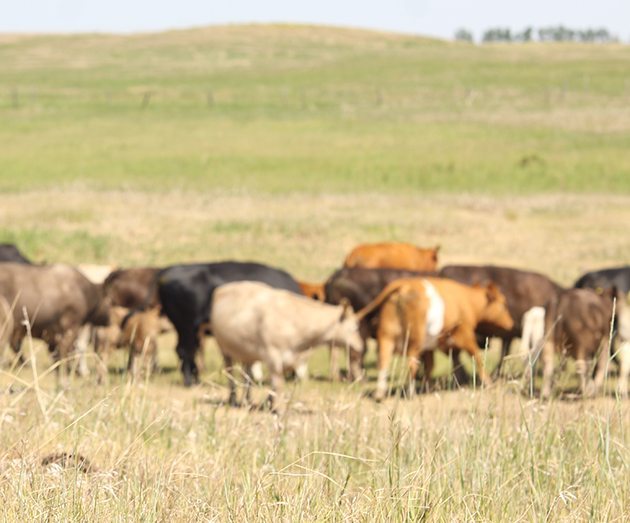Livestock producers are hard hit as pastures dry up and the price of hay triples
More Alberta counties have de-clared themselves agriculture disaster areas as drought spreads across the province.
The northern counties of Sturgeon, Leduc, Mackenzie, Parkland and Thorhild and the southwestern county of Cypress are suffering from severe dryness as crops and pastures shrivel, and more could join their ranks.
Deciding to declare a disaster is a hard call to make because spotty rain has alleviated conditions for some, said Al Kemmere, president of the Alberta Association of Municipal Districts and Counties.
“Even within counties there are scorched areas and areas that are actually doing quite well.”
Read Also

Government, industry seek canola tariff resolution
Governments and industry continue to discuss how best to deal with Chinese tariffs on Canadian agricultural products, particularly canola.
The declarations are raising awareness as the situation becomes more dire.
“We don’t know if this is Year 1 of a multi-year situation or if this is going to be one year at a time,” he said.
Yields will be down and crop insurance is available, but more help may be needed.
“The province has been very clear: the insurance programs that are out there are the first line of defence.”
Livestock producers are hardest hit because feed supplies are disappearing fast. The price of a bale of hay has tripled in price and is up to around $200.
Hay may have to come from other regions of the country because some parts of the province are so dry there are no cereal crops for emergency grazing.
A Level 4 drought rating was de-clared last week for the South Coast and Lower Fraser regions of British Columbia.
Local water managers could temporarily suspend short-term water approvals or water licences in affected watersheds if necessary.
A Level 3 drought rating for B.C.’s South Thompson, Nicola, Similkameen, Okanagan-Kettle and Skagit regions was also declared.
Level 3 drought conditions call for voluntary water use reductions of 20 percent or more from all municipal, agricultural and industrial users.
British Columbia is facing challenges due to dryness and early heat waves, said Reg Ens, manager of the B.C. Agriculture Council.
Everything from grain to horticulture crops are up to three weeks early because of unseasonably hot weather and nominal precipitation in May and June. Conditions are variable across the province.
For example, hay yields in the northeast, the north coast, and the upper Columbia and Peace regions are acceptable but non-irrigated hayland may not get second cuts or will be lighter than normal.
Central Cariboo hay crops are light, and there may be poor yields leading to shortages.
The south coast, Fraser Valley and Vancouver Island regions are hurting.
High value crops such as blueberries are irrigated, but that may not provide enough water to meet crop requirements.
Raspberries are also stressed with lower than normal yields.
“Even the guys who had irrigation, they got some crop off but the fruit was baking on the bushes,” he said.
Governments have said crop insurance is the first line of defence, but that may not be enough because participation rates are declining, said Ens.
The B.C. Cattlemen’s Association is surveying members to determine forage production, water supply and reservoir levels, regional hay availability and feed prices.
The survey may be found at www.surveymonkey.com/r/BCCA_DroughtSurvey2015.
On July 23, the federal government announced 2015 tax deferrals for livestock producers in prescribed drought regions who are facing feed shortages and have to sell breeding stock.
Proceeds from deferred sales are then included as part of the producer’s income in the next tax year, when those proceeds may be at least partially offset by the cost of replacing breeding animals.
The breeding herd must have been reduced by at least 15 percent. If this is the case, 30 percent of income from net sales can then be deferred.
Ninety percent of income from net sales can be deferred in cases where the herd declines by 30 percent or more.
Eligible producers can request the tax deferral when filing their 2015 income tax returns.
The list of regions can be found atbit.ly/1CZTy2B.



















